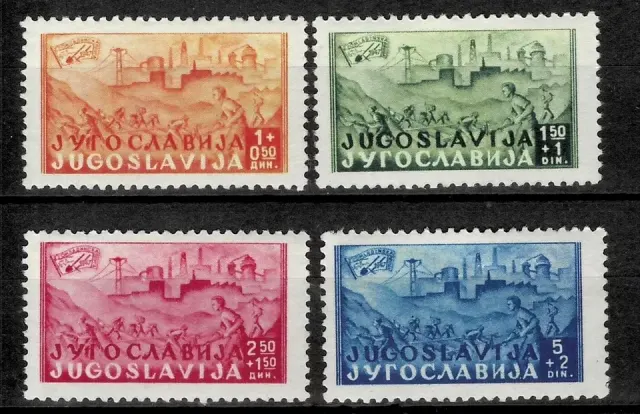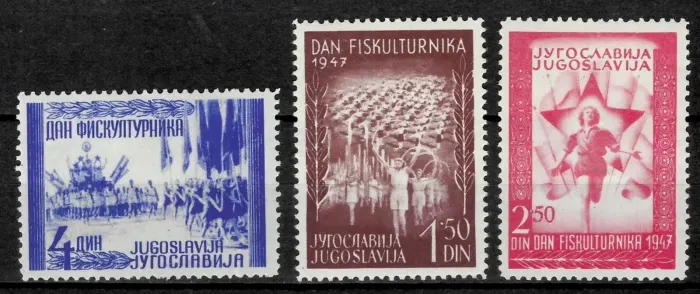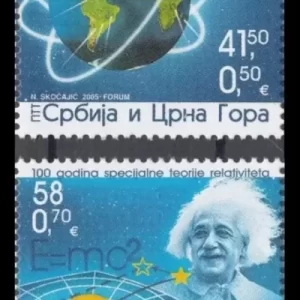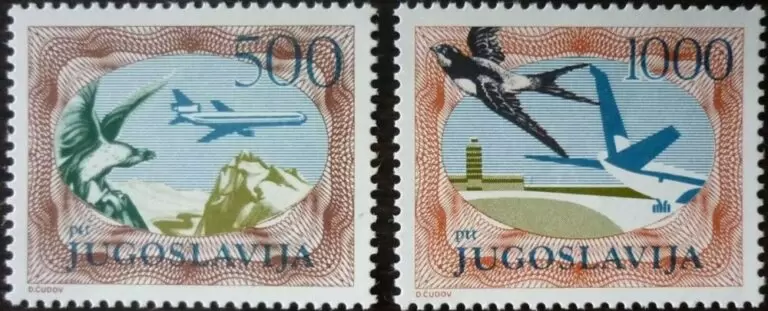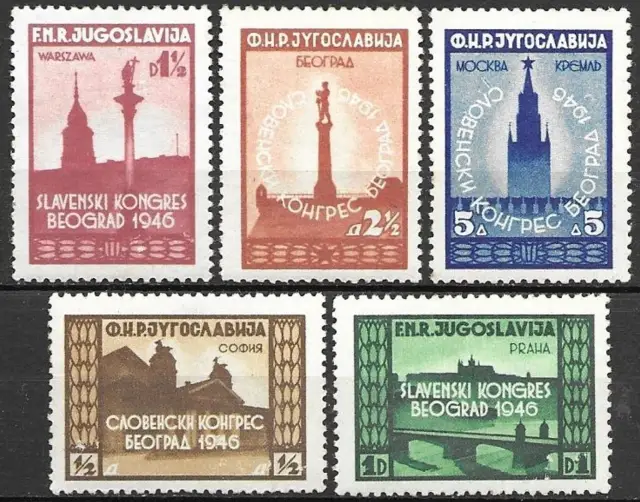Yugoslavia stamps year 1947 Construction of the Samac-Sarajevo Railway set MNH**
The Samac-Sarajevo Railway construction in 1947 was a major youth volunteer infrastructure project in post-war Yugoslavia. Here are the key details:
The railway line connected Samac (on the Sava River) to Sarajevo, spanning approximately 240 kilometers through challenging terrain in Bosnia and Herzegovina. It was one of the most ambitious youth work actions (Omladinske radne akcije) of early socialist Yugoslavia.
Key aspects of the project:
- Youth Brigades: Over 200,000 young volunteers from across Yugoslavia participated in the construction, organized into work brigades. These included both local Yugoslav youth and international volunteers.
- Construction Period: The main construction took place between April and November 1947, an impressively short time for such a major infrastructure project.
- Challenging Conditions: Volunteers worked in difficult conditions, cutting through mountainous terrain, building tunnels and bridges, often with basic tools and limited machinery.
- Ideological Significance: The project embodied the Yugoslav socialist ideals of “Brotherhood and Unity” (Bratstvo i Jedinstvo) and voluntary youth labor. It was seen as a way to rebuild the country while forging a new socialist consciousness.
- Technical Achievement: The railway included 17 tunnels and 234 bridges, making it a significant engineering accomplishment for its time.
The railway line became an important transportation artery, connecting Bosnia’s capital with northern transportation routes and contributing to the region’s economic development.
Since this is quite specific historical information, while I aim to be accurate, you may want to double-check these details against other sources.

